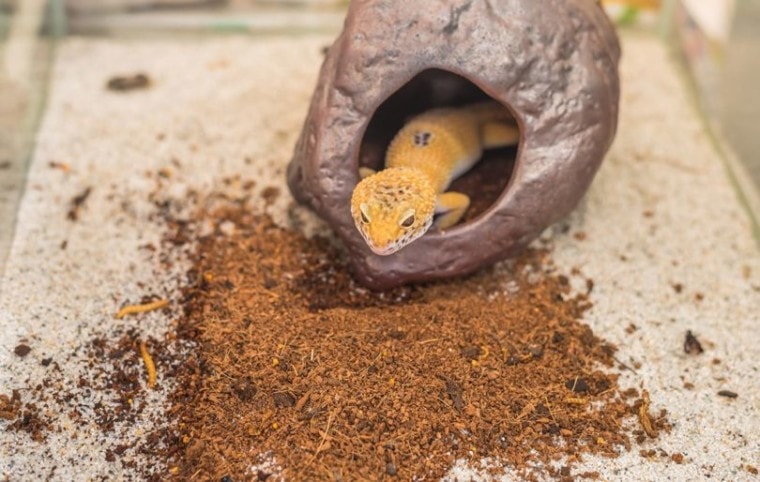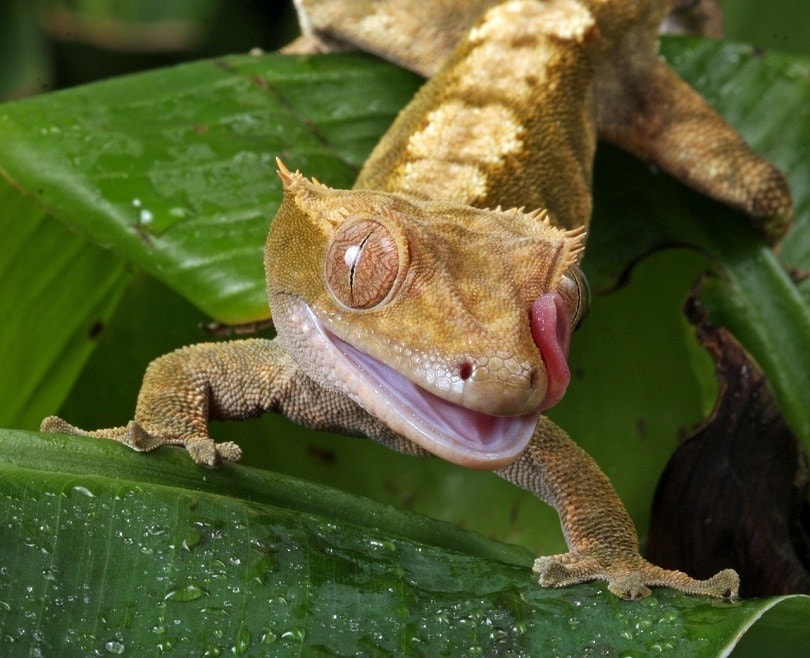
Leopard Geckos are a popular pet amongst those who cannot have or do not want furred companions. Their sweet faces and temperaments make them great pets for those interested in companionship. Their relatively simple care needs make them good pets for those unacquainted with reptile care.
Some Leopard Gecko owners wonder about breeding their Leopard Gecko. It makes sense; if you love Leopard Geckos, the more Leopard Geckos, the better, right? Leopard Geckos will lay around eight to ten eggs each breeding season once they reach maturity. Here’s the scoop on Leopard Gecko breeding.
When Is the Leopard Gecko Breeding Season?
In the wild, they experience a breeding season between January and September. However, Leopard Geckos can be encouraged to breed at any time in captivity. Many breeders breed their Geckos year-round and claim that doing so improves the fertility of the eggs laid by their females.

How Do I Encourage My Leopard Geckos to Breed?
Breeding your Leopard Geckos is encouraged if one male and at least two females are in their colony. To help them understand that it’s time to oviposition, you’ll want to shorten their “day” cycle by shielding their enclosure from bright light for more hours. You’ll also want to decrease the optimal temperature of their tank to 70–75 degrees Fahrenheit. Lastly, you’ll want to designate an area in their enclosure for ovipositioning. This area should have a soft, moist substrate that the Geckos can bury the eggs in.
Leopard Gecko Gestation Cycle
The Leopard Gecko gestation cycle lasts between 18–22 days. Once the eggs have gestated, the females will lay a clutch of one to two eggs. A female can lay roughly five clutches of eggs during a regular breeding season and produce 80–100 eggs in her lifetime if bred only during the natural breeding season.
During the gestation cycle, the eggs will be visible beneath the skin of the female. This is normal, and you need not worry if you can see the eggs while she is carrying them.

You’ll want to give your females a high calcium diet during the gestation cycle. Doing so helps replace the excess calcium lost during the creation of eggs.
When first laid, the eggs will be soft and sticky to the touch. Over the next few days, they should quickly harden and develop a leathery, chalk-white membrane around them. Any eggs which stay soft are infertile.
Why Are My Gecko’s Eggs Infertile?
If your Gecko is laying infertile eggs, it usually means that her diet isn’t proper for egg-laying. Male or female sterility could cause infertility, but improper diet is a far more common reason.
Egg Incubation
Leopard Gecko eggs should be incubated separately from their parents as Leopard Geckos tend to eat their own young. Plastic deli cups or a shoebox filled with vermiculite or perlite are the most common incubation containers.
Mix the incubation medium with one part medium and one part water by weight, not volume. Slightly bury the eggs about one-half-inch apart and cover them with a tight lid. Make sure you put five to ten pushpin holes in the top of the lid so the baby geckos will be able to breathe.
The temperature of the eggs will determine the sex of the babies who are incubated. If the eggs are set at a temperature between 85 and 87 degrees, roughly equal males and females should be. There will be primarily males at 88–90 degrees, and at 80–84 degrees, there will be primarily females. Any temperature below 74 degrees Fahrenheit will be lethal to the unhatched geckos.
You can use incubators if you need to temperature control the environment; there are many incubators you can use for Leopard Gecko eggs. However, you must put the substrate in the incubator, or the eggs will shrivel up and die.
Eggs will incubate for 35–89 days, depending on the temperature they’re being incubated at.
Hatchling Care
Leopard Geckos are based raised individually. If space is a concern, raising them together is possible, but you’ll have to keep in mind that your Leopard Geckos are together, and you’ll need to protect the smaller ones from being bullied off of food.
For the beginning of their lives, they’ll feed off the yolk of their egg. They won’t need to be fed other foods until they’ve shed at least once, which won’t happen for several days.
Baby geckos will need to be in a warmer tank than their adult counterparts. The cool side of their enclosure should be the same as it would be for an adult, 73 degrees. The warm part should be closer to 90 degrees.
Final Thoughts
Leopard Geckos are a fun family pet and learning more about their biology is a great way to become a better Leopard Gecko owner. Following a Leopard Gecko from egg to adulthood might seem like a fun idea, but owners should think very deeply about whether they are equipped to incubate and raise a baby Leopard Gecko before breeding them. The ones you buy in stores have already had the complex parts done for you!
Featured Image Credit: BLUR LIFE 1975, Shutterstock






